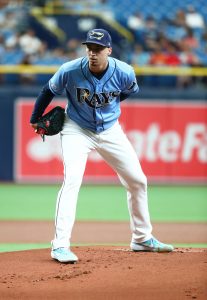Thanks to the heroics of shortstop Carlos Correa, who hit a walk-off home run Thursday, the Astros forced a Game 6 of the American League Championship Series against the Rays. Both teams’ starters are set for that affair on Friday. The Astros will use left-hander Framber Valdez, per manager Dusty Baker (via Brian McTaggart of MLB.com), while the Rays will turn to fellow southpaw Blake Snell, Marc Topkin of the Tampa Bay Times tweets.
This will be the third straight backs-against-the-wall game for the Astros, who fell behind 3-0 in the series but have refused to go away quietly. They’ve won two consecutive games by a 4-3 score and will now rely on the 26-year-old Valdez to keep their season going. He was an indispensable part of their Justin Verlander-less rotation during the regular season, when he tossed 70 2/3 innings of 3.57 ERA/2.85 FIP ball with 9.68 K/9, 2.04 BB/9 and a 60 percent groundball rate. Valdez has added another 18 frames in the postseason and allowed just four earned runs. The Rays did, however, get the better of him in Game 1 of the ALCS with a 2-1 victory.
Snell was at the helm for the Rays in the series’ first game, and the former AL Cy Young winner gave up one run in five innings. He has generally been excellent in these playoffs, having surrendered five ER in 15 2/3 frames. Before that, Snell had another effective regular season with 50 innings of 3.24 ERA/4.35 FIP pitching with 11.34 K/9, 3.24 BB/9 and a 49.2 percent GB rate. The 27-year-old now has a chance to pitch Tampa Bay into the World Series for the first time since 2008.

